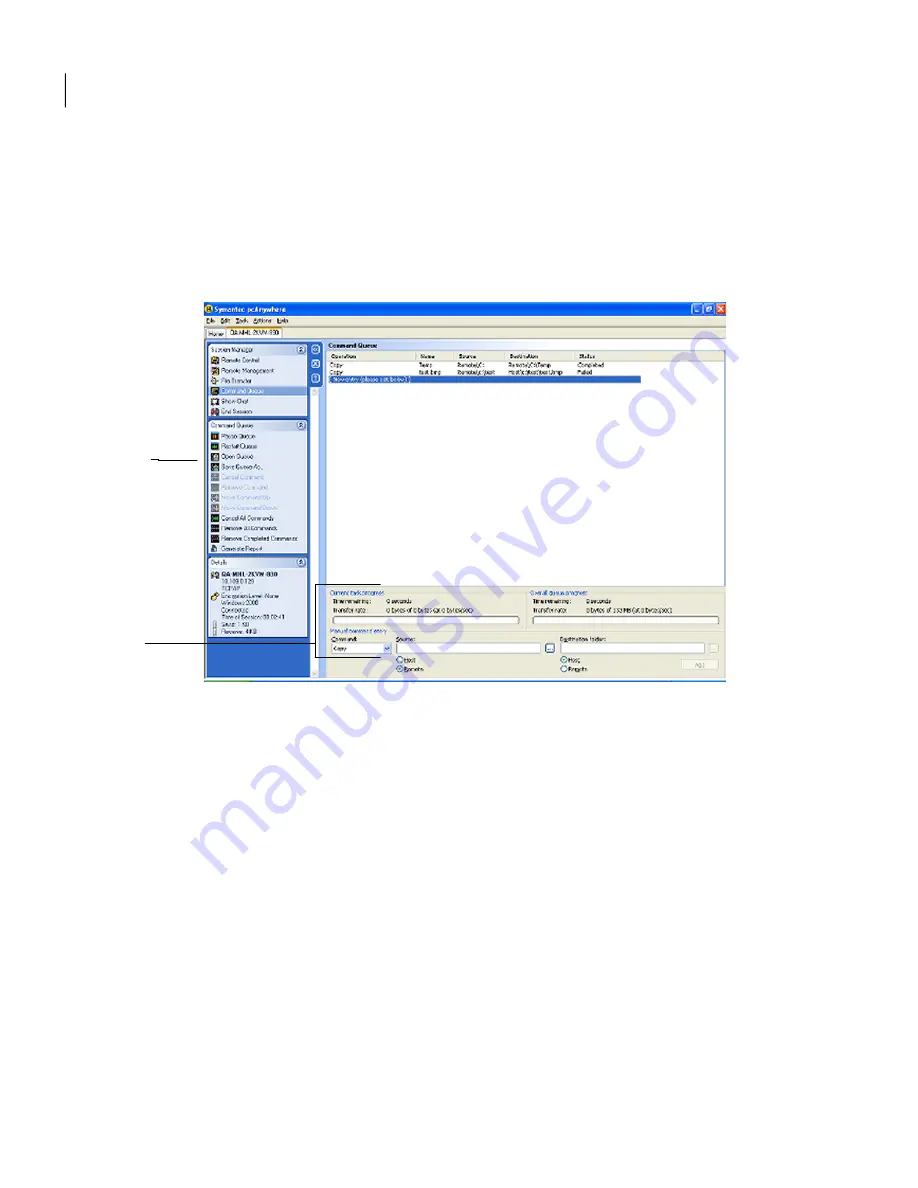
You can add your command queue files to the Windows Task Scheduler to run
them automatically.
See
“Scheduling a command queue file to run automatically”
on page 200.
Figure 8-1
shows the Command Queue window during a session.
Figure 8-1
Command Queue window
Command
Queue tasks
Command Queue
operations
Using command queue files to automate tasks
You can create a command queue file that contains file transfer, command-line,
and end-of-session commands while you work offline. These queue files are added
to the Command Queue window. You can connect to a host computer later and
run the commands that are contained in the queue file.
For example, you can create a queue file to distribute and install software updates
on a group of computers on your network.
The following is an example of how to set up a command queue file:
■
Add a command to create a folder on the host computer in which you want to
install the software.
See
“Creating a folder on the host or remote computer”
on page 186.
■
Add a command to copy the executable file from the remote computer to the
directory that you created on the host computer.
See
“Copying or moving a file”
on page 183.
Automating file transfer and management tasks
Using command queue files to automate tasks
182
Summary of Contents for PCANYWHERE - V12.5
Page 1: ...Symantec pcAnywhere User s Guide 12164653 ...
Page 16: ...Contents 16 ...
Page 28: ...Introducing Symantec pcAnywhere Where to find more information 28 ...
Page 68: ...Installing Symantec pcAnywhere Post installation tasks 68 ...
Page 234: ...Securing your computer and sessions Ways to assess host security 234 ...
















































